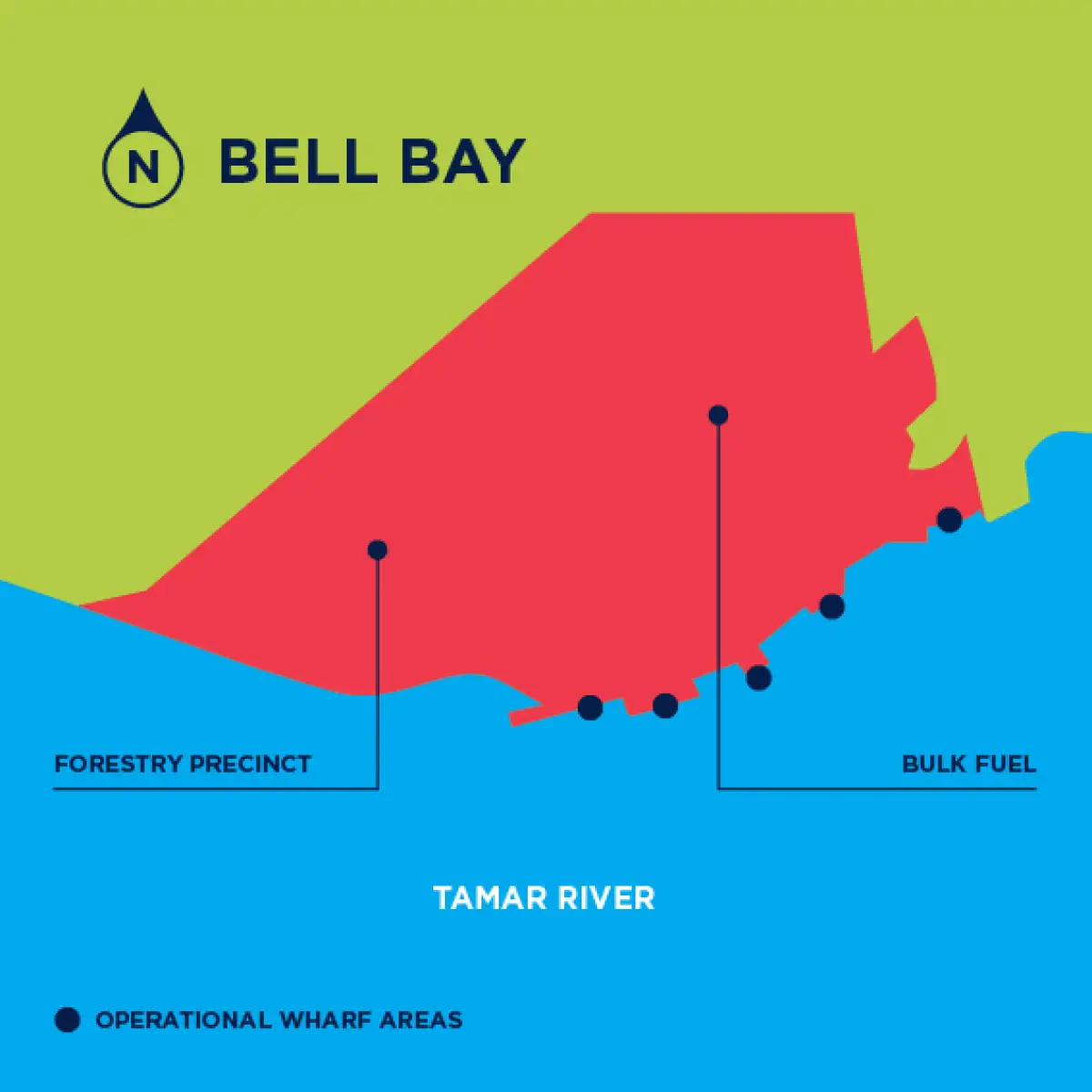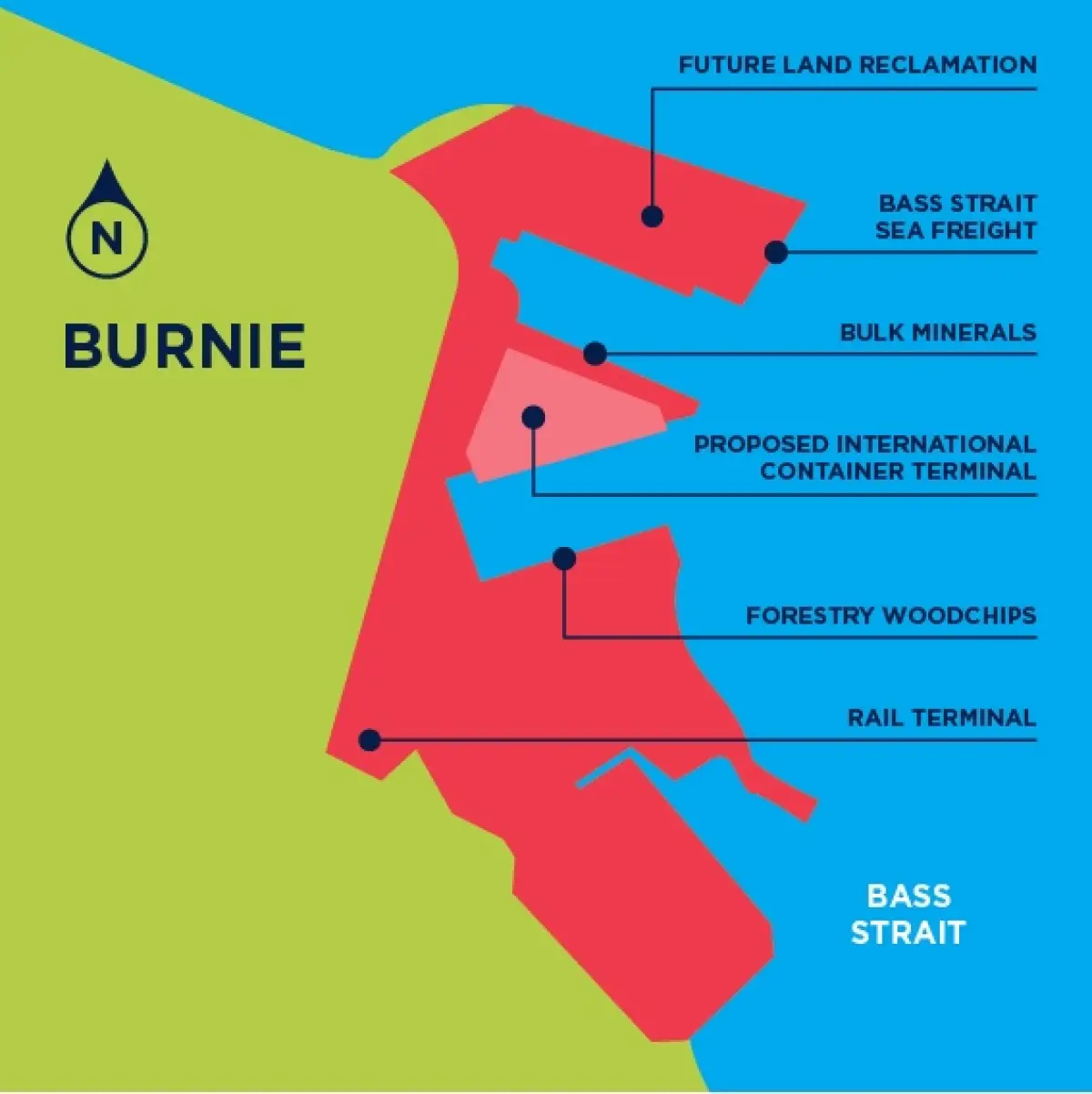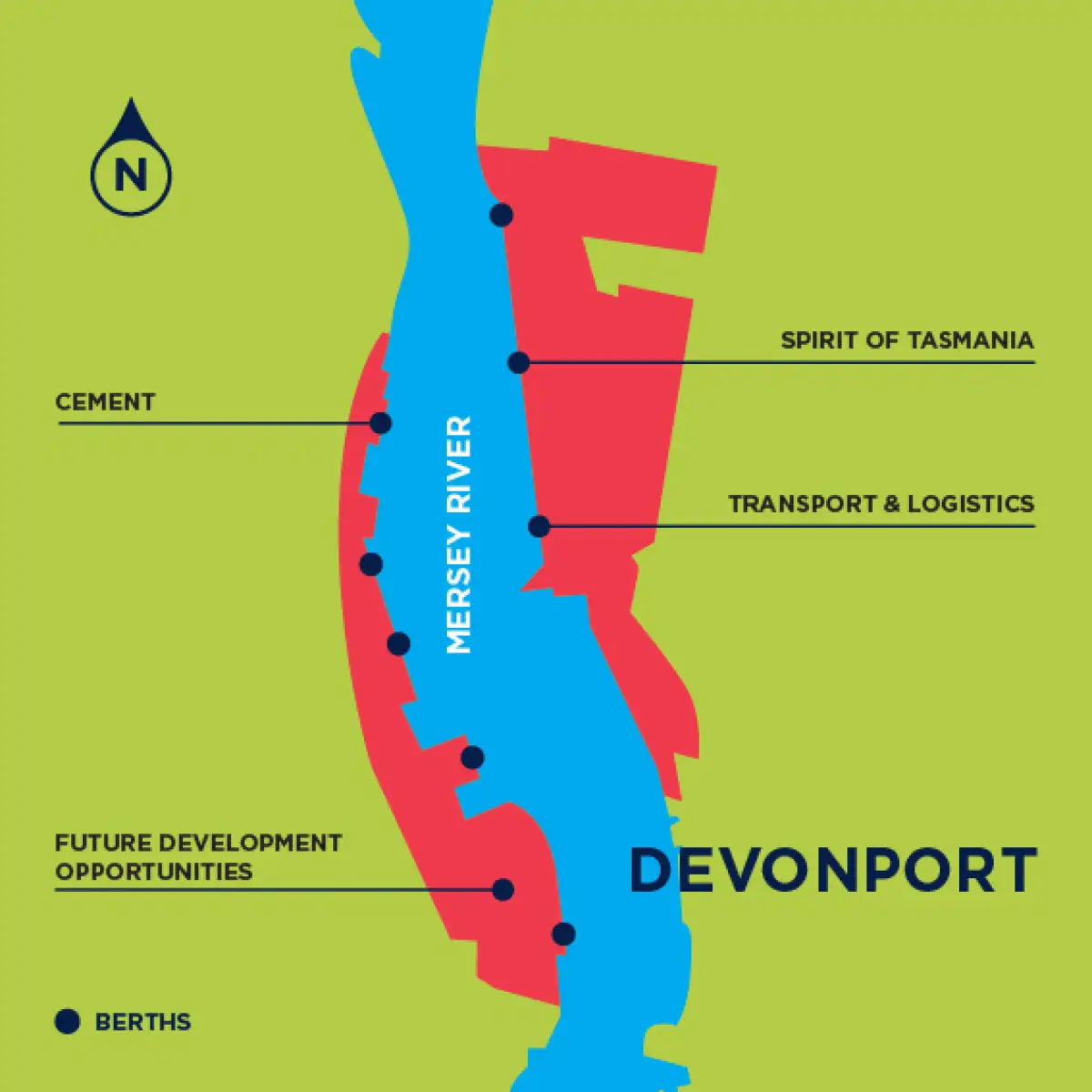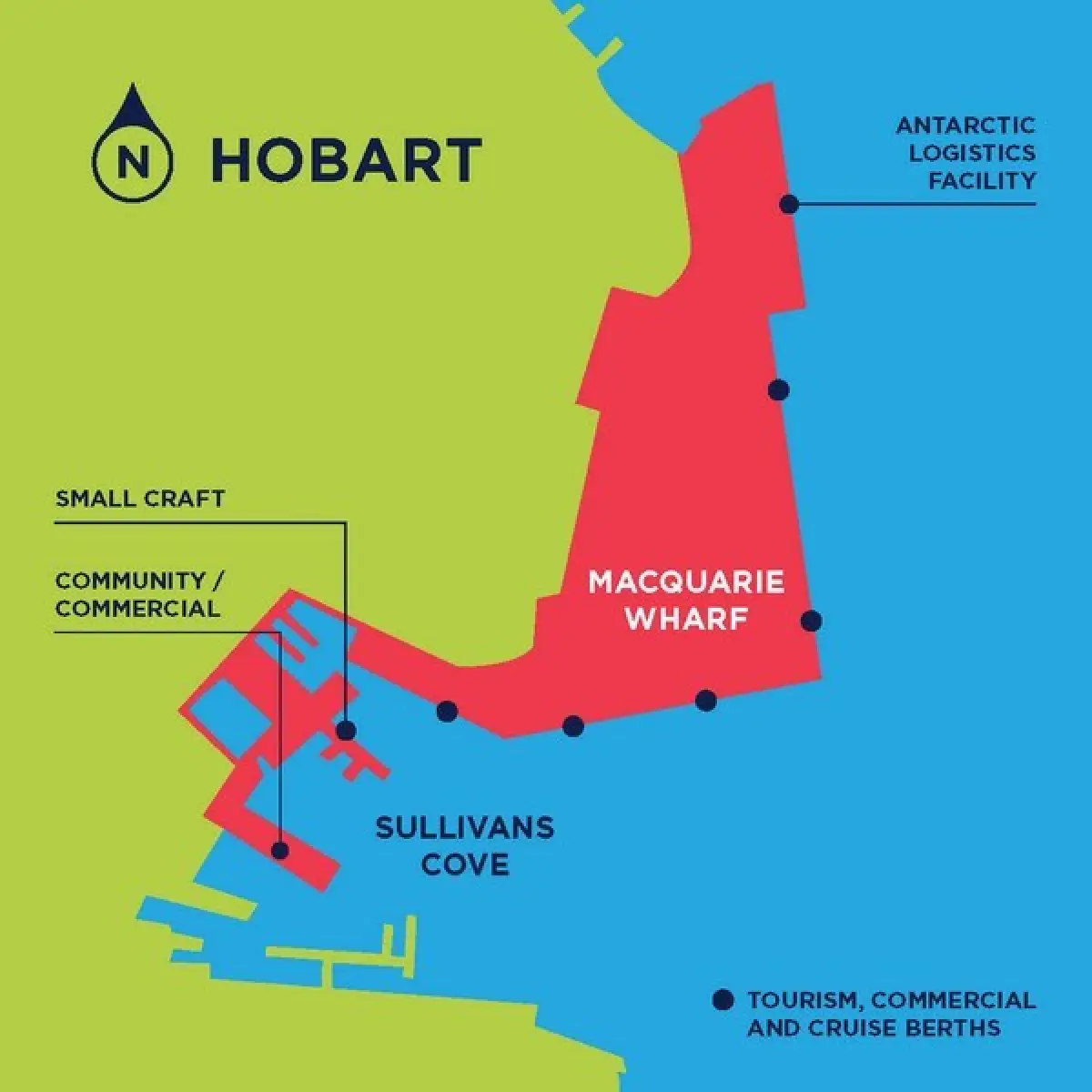Port Master Plan
Delivering an efficient port system for Tasmania
TasPorts released its Port Master Plan in August 2018 to guide a coordinated, statewide vision for the future of Tasmania’s multi-port system. Following industry engagement over the last two years, TasPorts has evolved its planning in some aspects of the Port Master Plan detailed below.
WHY DEVELOP A PORT MASTER PLAN?
- The plan will guide TasPorts’ planned port infrastructure investment, ensuring port facilities meet future demand as Tasmania’s economy grows.
- As markets change, increased port capacity will attract new business including cruise, Antarctic research, cargo and freight.
- An efficient port system will provide exceptional value for customers and the wider economy.
Our ports are essential to the vitality of Tasmania’s economy and the well-being of all Tasmanians.
WHAT DOES THE PLAN INVOLVE?
Our plan will guide $200 million in port infrastructure improvements over the next 15 years.
TasPorts will maintain its multi-port system, focusing investment on providing greater capacity and capability at the four major ports, increasing Tasmania’s ability to attract new business.
As more than 99% of the state’s freight comes in and out of Tasmania by sea, ports are one of Tasmania’s most important economic assets.
TasPorts will continue to support its community asset sites at Inspection Head, Strahan, Stanley and Sullivan’s Cove (Hobart).
TasPorts’ Chief Executive Officer, Anthony Donald, highlights the benefits of the Port Master Plan.
WHAT ARE THE BENEFITS?
- A co-ordinated state-wide vision for the future of Tasmania’s ports over the next 15 years.
- There will be significant benefits for all Tasmanians including:
- A world-leading Antarctic precinct, positioning Hobart as the key gateway to the Southern Ocean.
- Greater capacity for larger cruise ships in Hobart and Burnie, increasing tourism.
- Improved berthing capacity and facilities supporting passenger services, logistics, freight, forestry, mining and other industries.
- Increased synergies of working ports with local communities.
- Attracting additional Antarctic research, which supports 1,200 direct and indirect employees locally; the sector injects more than $180 million into Tasmania’s economy each year.
WHAT UPGRADES ARE PLANNED FOR THE MAJOR PORTS?
BELL BAY
New developments will benefit the mining, forestry and fuel industries.
BURNIE
Increased capacity for forestry, minerals and cargo, including a proposed new international container terminal.
DEVONPORT
There will be increased capacity for an additional 160,000 passengers annually to enter Devonport and enhanced freight facilities.
HOBART
TasPorts will expand Hobart’s cruise precinct to berth larger vessels, establish a new Antarctic precinct, and improve the waterfront as a tourist destination.

DEVELOPMENT AT BELL BAY
- A $10 million investment will improve berthing at Bell Bay, optimising port facilities for industry.
- Investment will enable forestry and mining exports from multiple berths, replacement of fuel pipelines and increased capacity for fuel storage.
- A new transport and wash-down system will assist forestry exports.

INCREASED SEA FREIGHT CAPACITY AT BURNIE
- Approximately $80 million will be invested at Burnie, including the proposed international container terminal.
- Increased sea freight capacity and berth extension to accommodate larger Bass Strait container and cargo vessels which are expected to arrive in 2019.
- A new international container terminal will attract direct trade with Asia and double activity at the port.
- Improved logistics and supply chain, with optimised ship loading for minerals exports.
- Improved cruise facilities, enabling more ship visits and tourism.

EXTENDED CAPACITY AT DEVONPORT
- A $50-$60 million development will extend berthing facilities for passengers, cargo and freight.
- Accommodate the planned new Spirit of Tasmania vessels, allowing an additional 160,000 passengers annually to enter Devonport.
- Extension of berthing facilities for leading Australian transport and logistics providers.
- Benefits for commercial fishing with opportunity to add marina and public event facilities.

HOBART: NEW CRUISE AND ANTARCTIC PRECINCTS
- TasPorts will invest $50-$60 million to update Hobart’s valuable working port facilities which sustain Tasmania’s growing tourism and trade.
- The cruise precinct at Macquarie Wharf will provide additional berths for cruise vessels, allowing services to grow with demand.
- A new Antarctic precinct will support the Tasmanian Antarctic Gateway Strategy and attract further international programs.
- A larger berth for RSV Nuyina, Australia’s latest ice breaker research vessel, which will arrive mid-2020.
- Enhancing Sullivan’s Cove as a visitor-friendly waterfront tourist destination.

A STRATEGIC PLAN BENEFITING TASMANIA’S FUTURE
TasPorts’ multi-port strategy will help meet increasing demand for port services from tourism and industry, supporting Tasmania’s economic growth.
All Tasmanians will benefit from increased sea trade and services, improving Tasmania’s links with national and international destinations.
Trade customers will be able to plan ahead, enabling freight volumes to surpass the 14.2 million tonnes moved through Tasmania’s ports in 2016/17.
TasPorts’ services will continue to play a major part in the state’s economic growth, for the benefit of all Tasmanians. For example, cruise tourism alone brought more than $73 million to Tasmania during 2016/17, and its value is increasing.